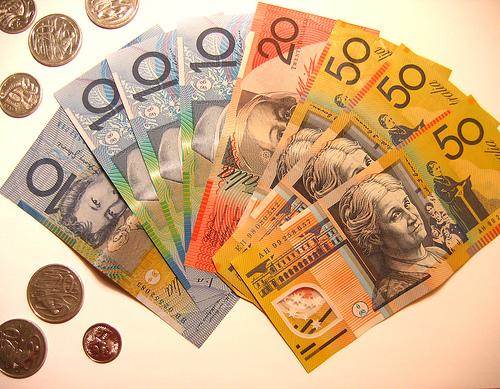 The Aussie has been plummeting since Thursday last week, losing about 0.65 percent since then until the end of Tuesday's session. Yesterday, it closed the session in negative territory, losing 0.30 percent.
The Aussie has been plummeting since Thursday last week, losing about 0.65 percent since then until the end of Tuesday's session. Yesterday, it closed the session in negative territory, losing 0.30 percent.
The Australian dollar is usually traded as a proxy for Asia, particularly as a proxy for the Chinese economy, so this situation shouldn't be surprising. On Thursday last week, the Aussie suddenly went down after a three-day winning streak that was caused by the impression that coronavirus infection rates were going down. Thursday brought a dramatic increase in coronavirus infections, mostly attributed to a change in the methodology for diagnosing the disease, making investors run towards safer assets like the US dollar, especially given the fact that the American economy is clearly outperforming its peers.
On Friday last week, the Aussie bounced, losing a bit of territory against the US dollar at the end of the session. Optimism about the Australian economy situation in the long run, fed by the resolution of the trade war between the United States and China, might have mitigated the negative effects of the epidemic in the market sentiment.
Yesterday, the Reserve Bank of Australia released the minutes of the first policy meeting they held this year. On them, the RBA signaled its willingness to cut the cash rates further if required. They also highlighted that an extended period of low rates may be required given the current economic situation, calling the coronavirus a "material" risk for China and Australia. Nevertheless, they remained optimistic regarding the future of the Australian economy, as they foresaw a pickup in the housing market.
"Looking ahead, the Bank's forecast was for growth in consumption to increase gradually, sustained by moderate growth in household disposable income and the recovery in the housing market," stated the bank on its minutes.
BIS Oxford Economics expects the Australian economy to contract by 0.5 percentage points in the first quarter of 2020, leaving overall economic growth at zero for that period. The RBA expects the economy to grow by 3 percent by 2021. RBA governor Lowe recently said that the outbreak is already having a major effect on the education sector but that he doesn't expect it to have a lasting effect in terms of the economic growth, however, he was counting on the dwindling infection rates which, as we already stated, proved to be a false positive.
We must highlight that it's hard to determine the long-term effects of the coronavirus outbreak and whether the global economy, especially China's, will be able to recover from its losses in the next quarter. In fact, on its latest official diagnosis, the RBA claimed that the effects of the outbreak are currently uncertain.
However, as we already stated, the probability of the RBA cutting the cash rates in the future is now higher, a fact that probably will keep weighing on the Aussie's performance in the future. Besides this, investors may continue running towards safer assets given the already detrimental effects of the epidemic in Chinese (and therefore the Australian) demand and economic growth.
This week, Aussie traders will pay attention to the release of the Australian unemployment rate for January, as well as the employment change figures, and these numbers may also have a direct impact on the Aussie.
